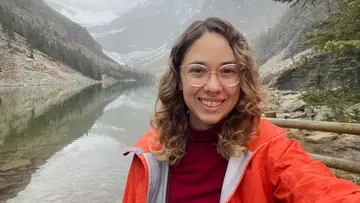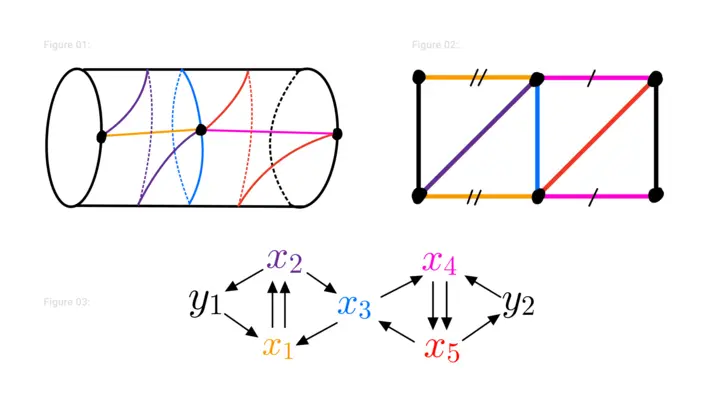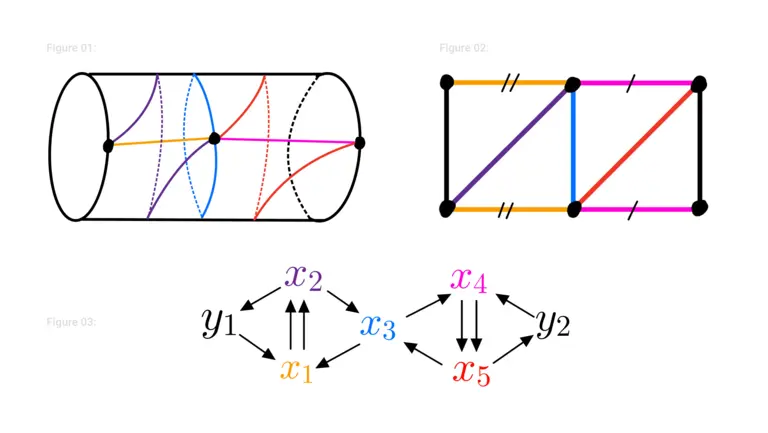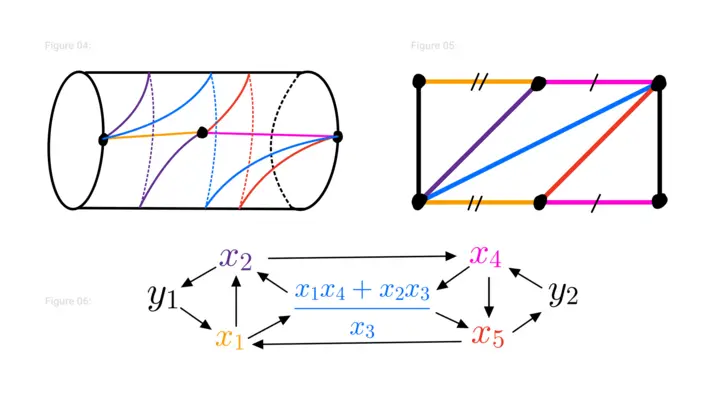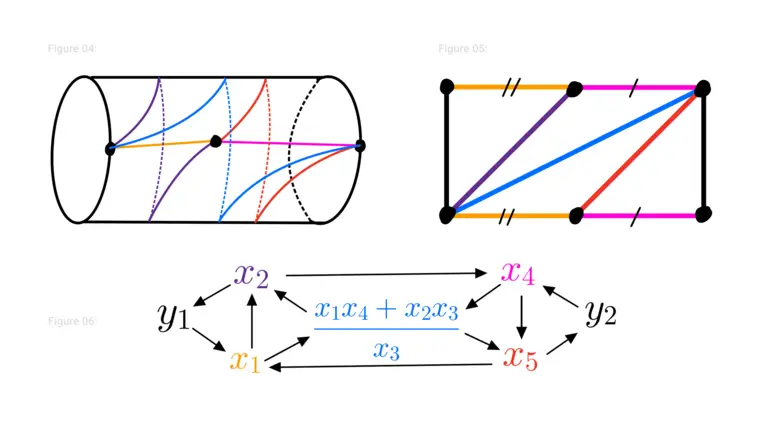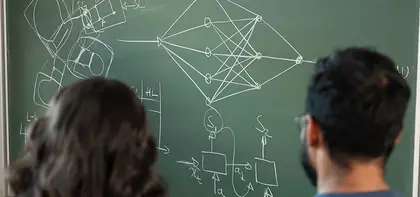
Cluster Algebras
Cluster algebras are structures that lie at the interface of algebra and combinatorics which appear in surprising ways throughout mathematics. We answer fundamental questions about cluster algebras by investigating the interaction between their algebraic and combinatorial structure.
Research
Cluster Algebras are algebras which are “grown” by starting with a seed and mutating it to produce new seeds. The combinatorics of seeds and their mutations are directly a generalization of the combinatorics of triangulations of surfaces and flips of triangulation. Figures 1, 2, 3 shows a triangulation of a punctured annulus and the associated seed in a cluster algebra. Mutation of this seed corresponds to changing the triangulation by a “flip” which removes an arc and replaces it with the unique new arc which forms a new triangulation. Figures 4, 5, 6 show a new triangulation and associated mutated seed which arises as a flip at the blue arc in the centre.
